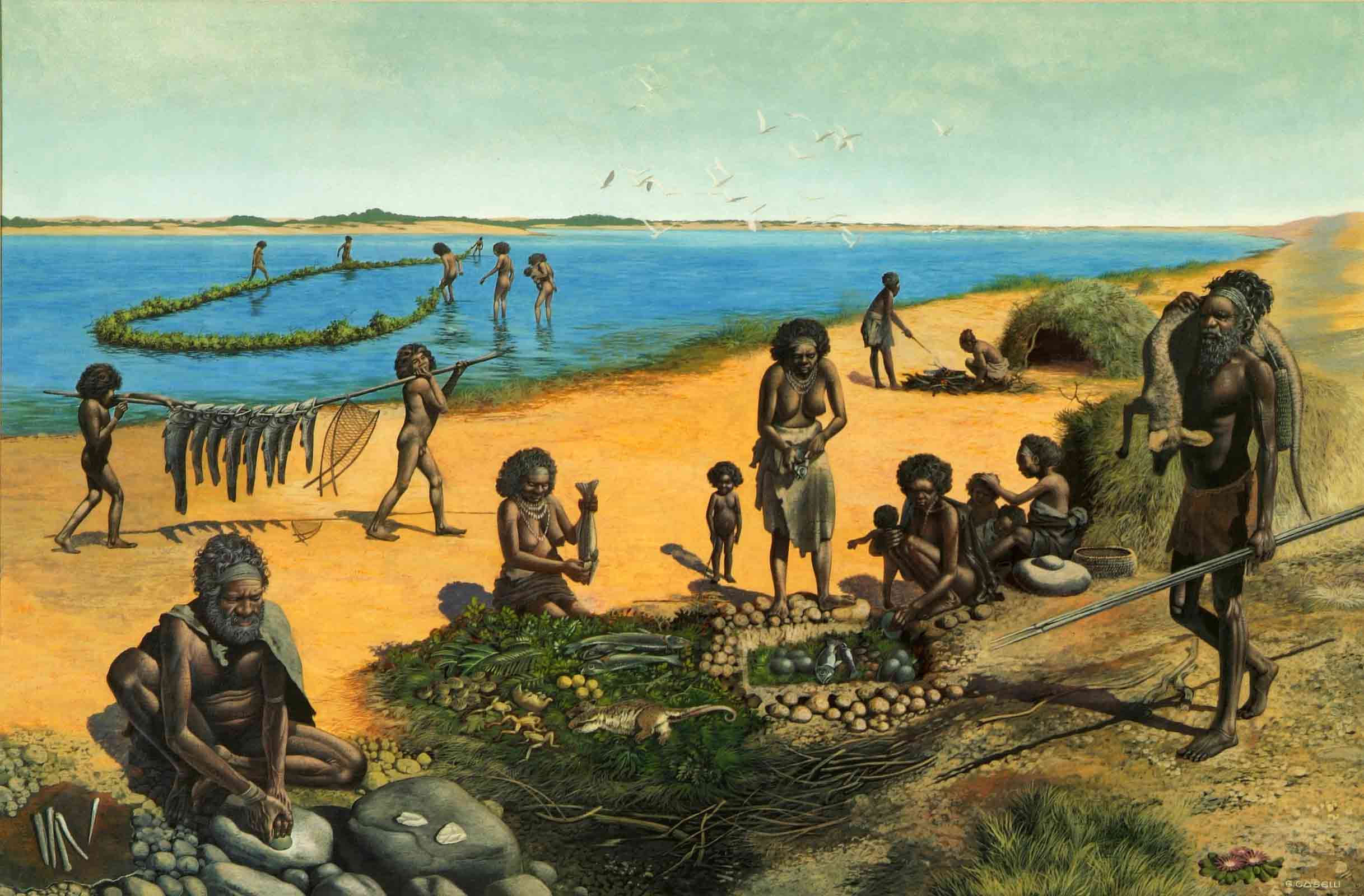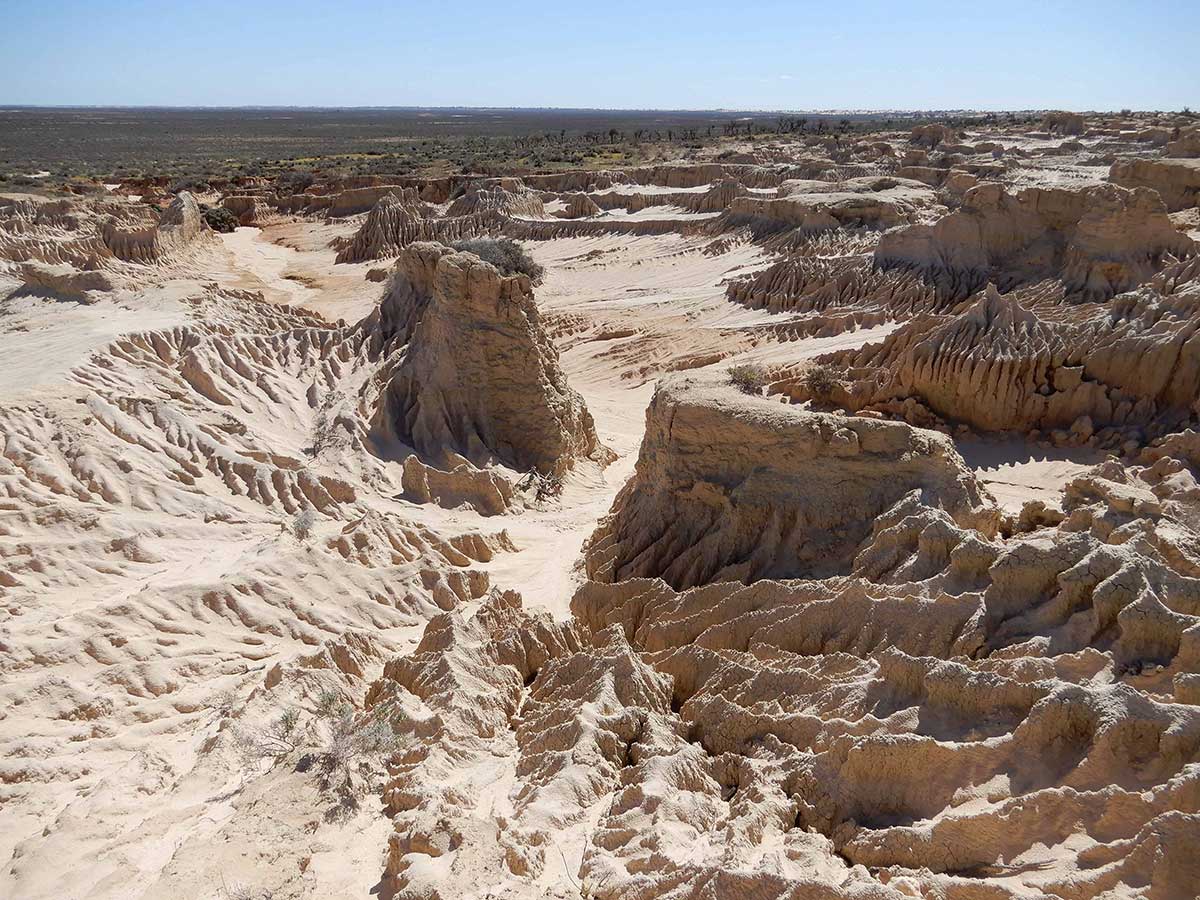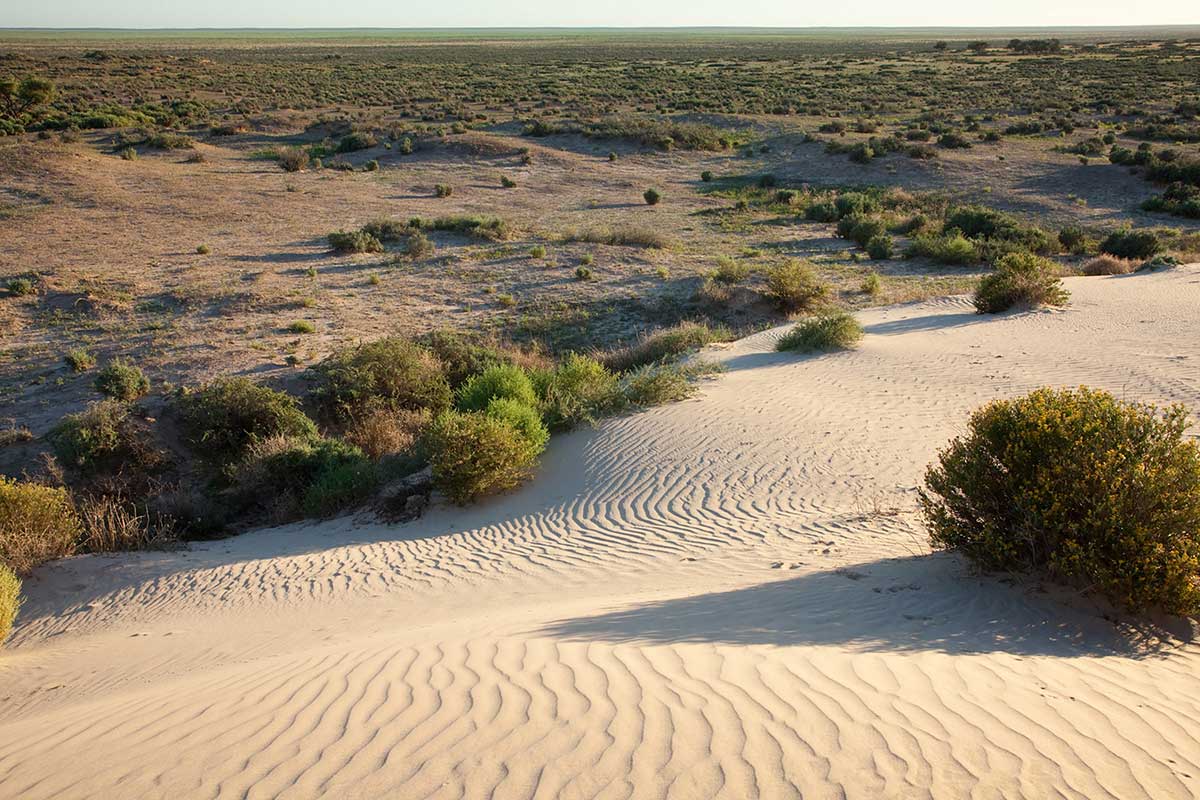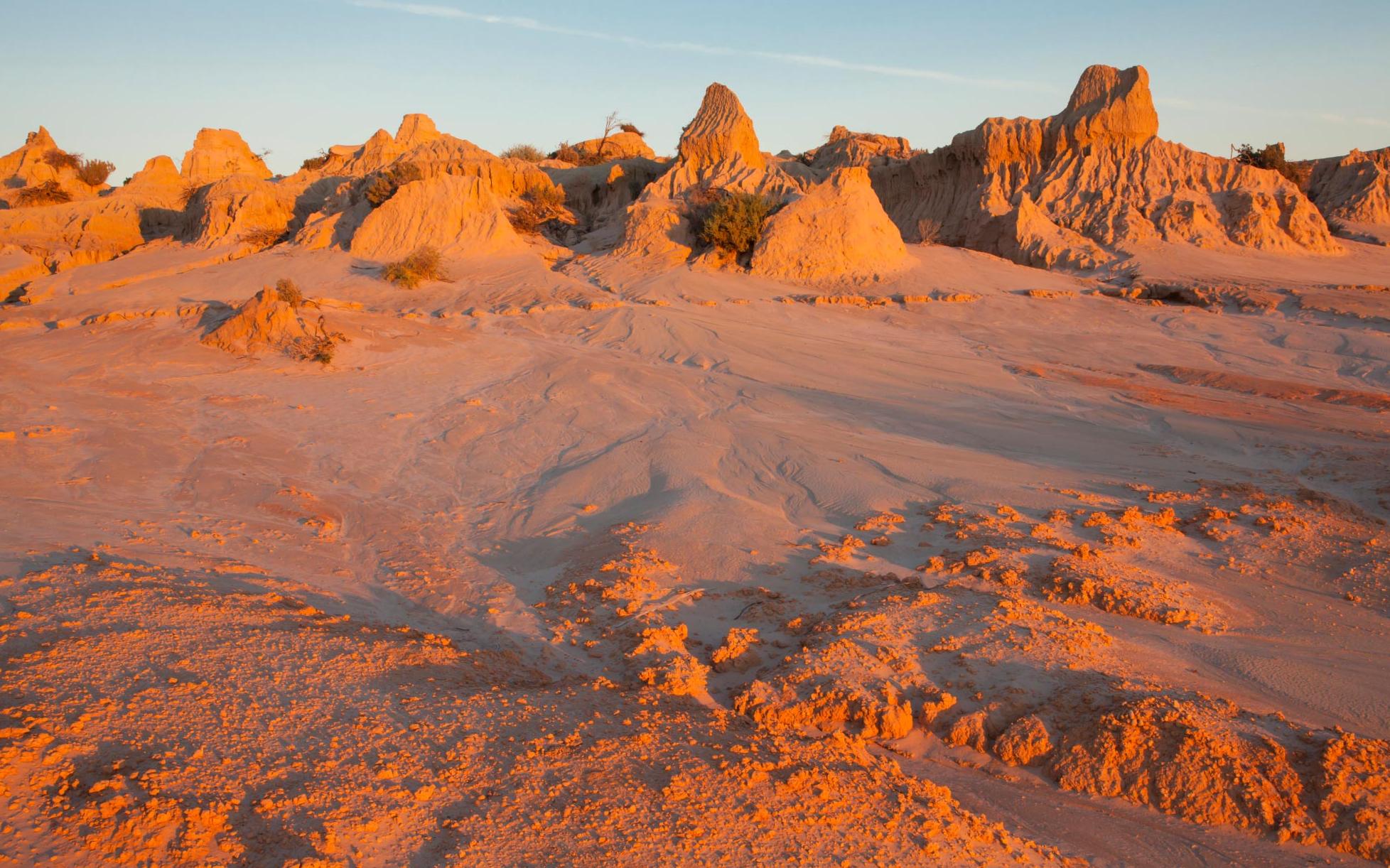Learning module:
Deep time history of Australia
Investigation 1: Finding out about Mungo Lady
1.1 ‘Cold case’ detective
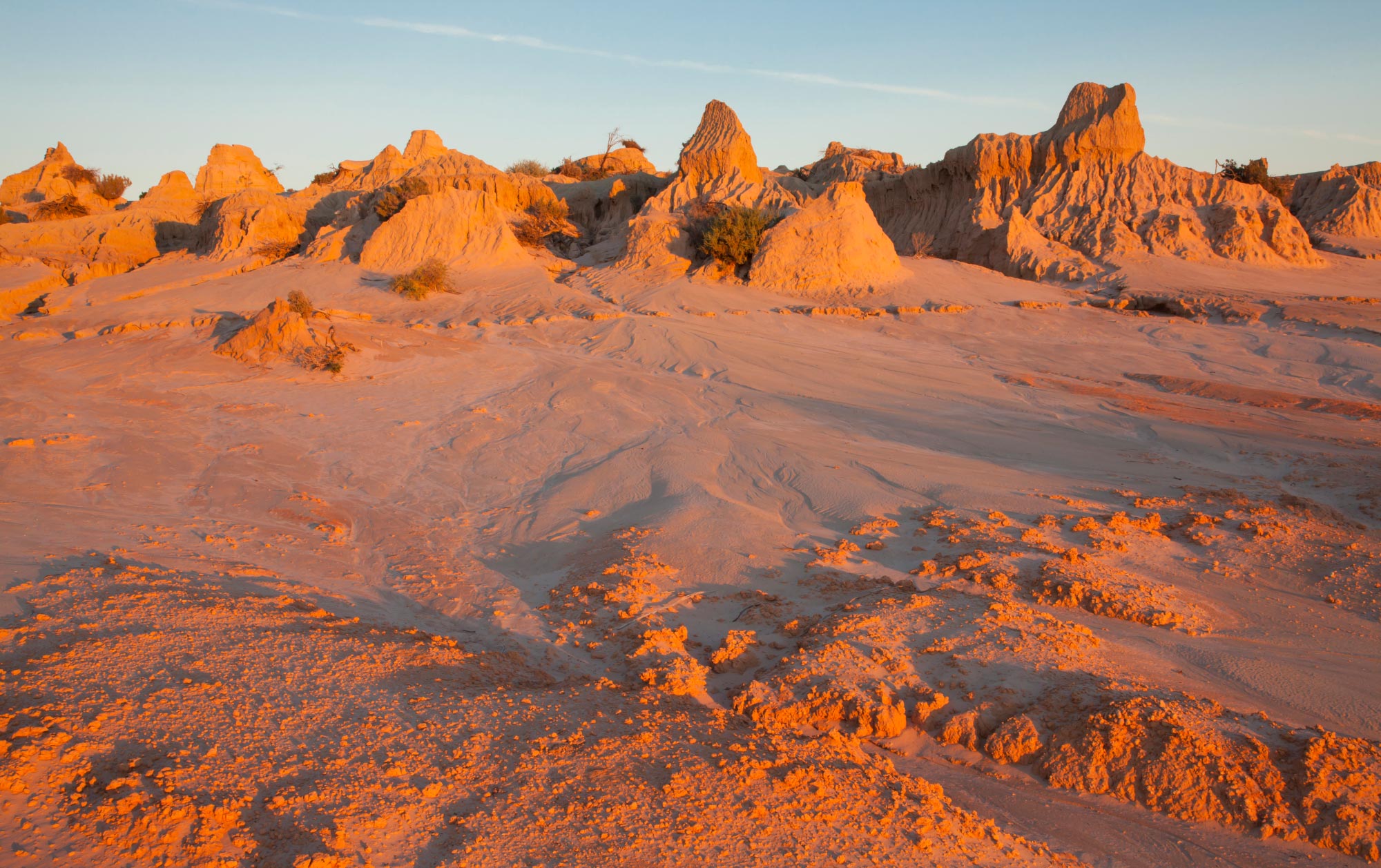
Welcome to the detective laboratory where we investigate ‘cold cases’ — unresolved
cases from the past.
We have an interesting case for you. We have found the remains of two people. You will need to look at the nine files of evidence and work out what happened to them. You can then submit a Cold Case Report.
Good luck with your investigation.
|
Location map |
Soil report |
Body 1 |
Body 2 |
The scene of the discovery |
|
Ochre report |
Dating report |
Stratigraphy |
Climate analysis |
Evidence file 1
Location map
The remains were recovered from a now-dry lake system at Lake Mungo, in western New South Wales. The nearest major modern settlements are several hundred kilometres away.
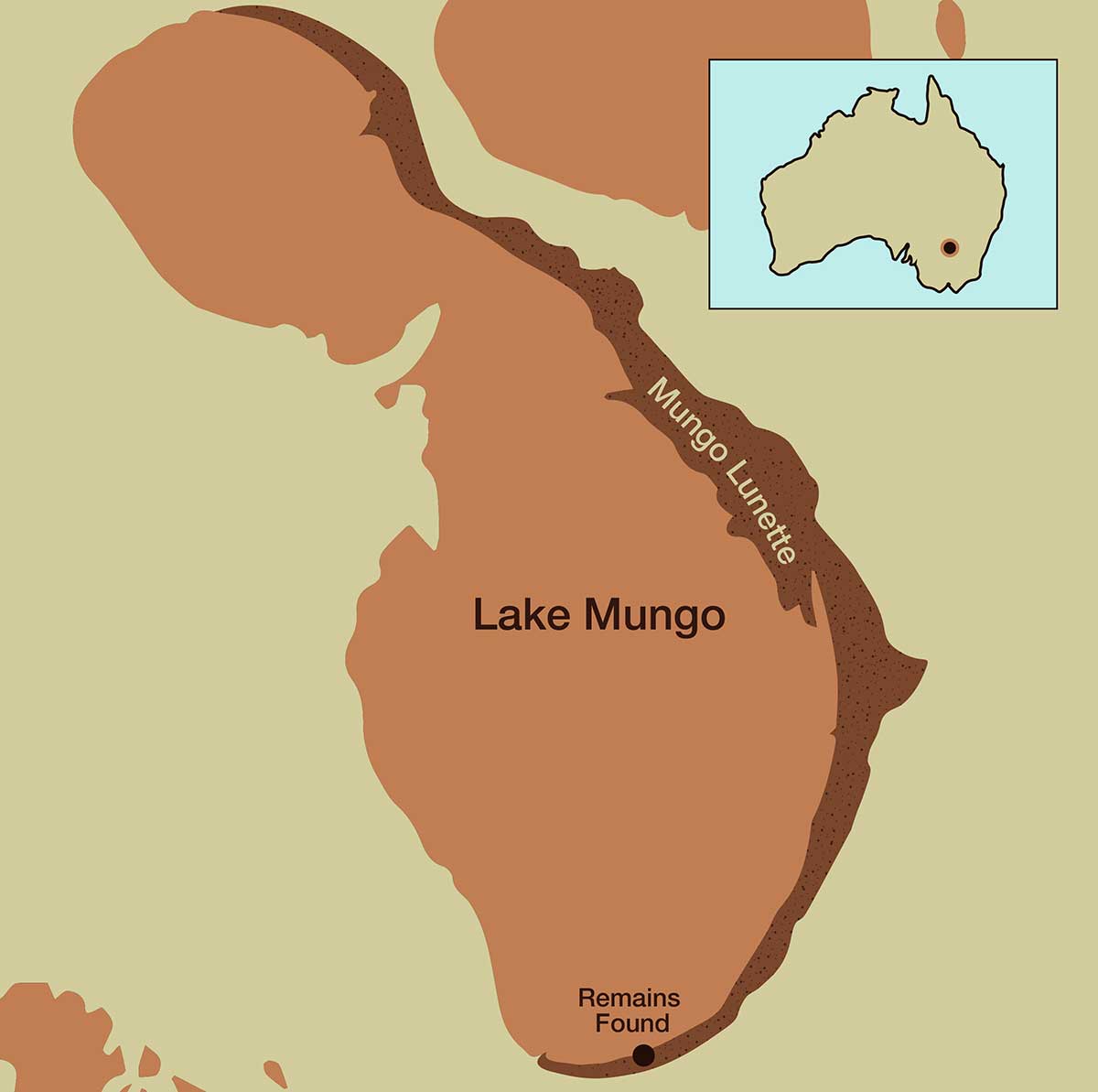
‘Lunettes’ are sand hills like this:
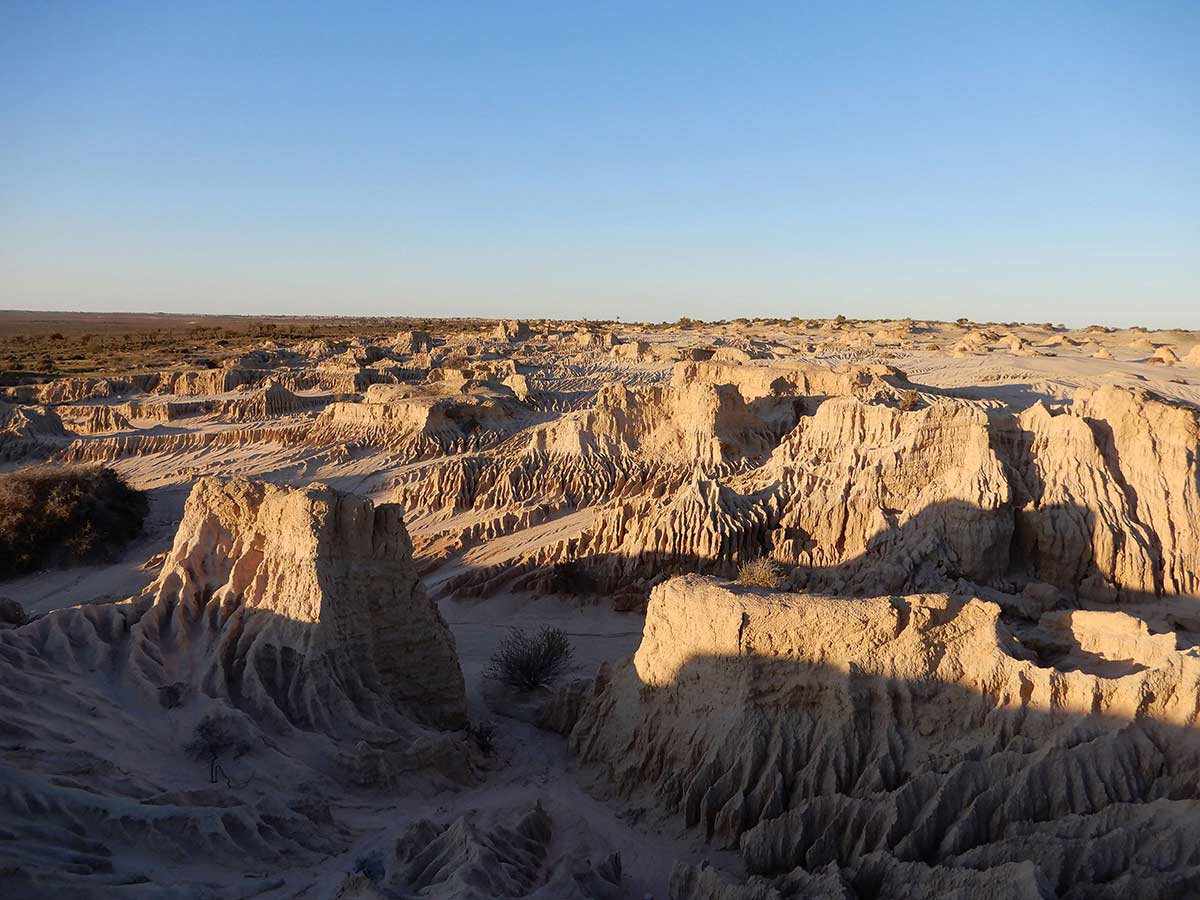
1. Using Google Maps, work out how far Lake Mungo is from you.
2. The nearest modern settlements are Wentworth and Mildura. Work out how far they are from Lake Mungo.
Evidence file 2
Soil report
The soil near the body showed traces of vegetation, fish bones and crustacean shells from a variety of fresh water species; a variety of native mammals, reptiles and birds; and ash from cooking fires. The fish and animals whose bones were found cannot live in the area today because the environment has changed.
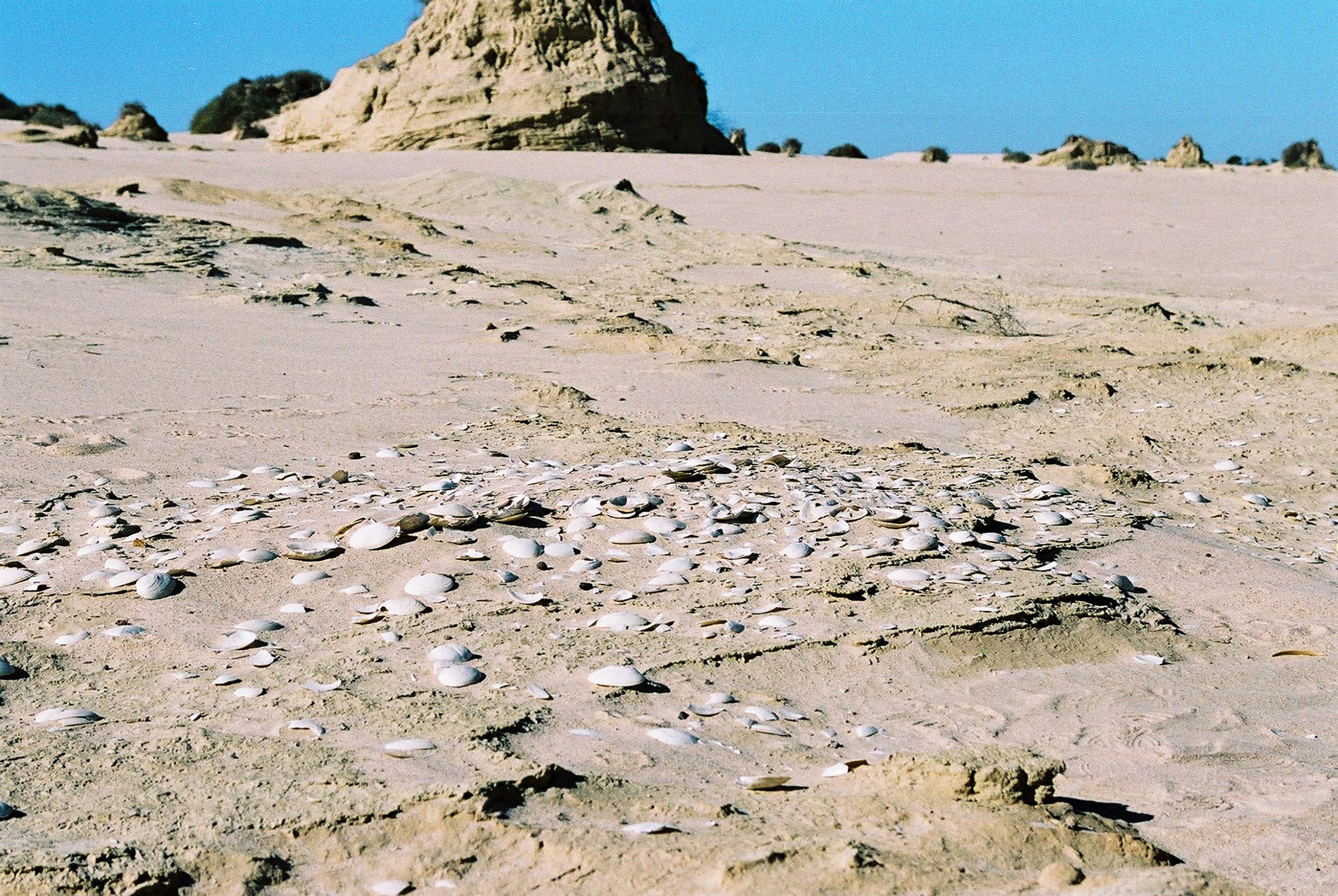
3. Why would the soil at Lake Mungo have been analysed? What can it tell us about ancient or Deep Time Australia?
4. Why would the changes in environment affect animals’ ability to live in the area? How would this affect humans?
Evidence file 3
Body 1
The bones had been crushed, burned, crushed again, burned again and finally buried. They were only found because the topsoil had eroded and winds had exposed them at the surface. They were the remains of a young woman, aged about 18 when she died. No cause of death could be determined.
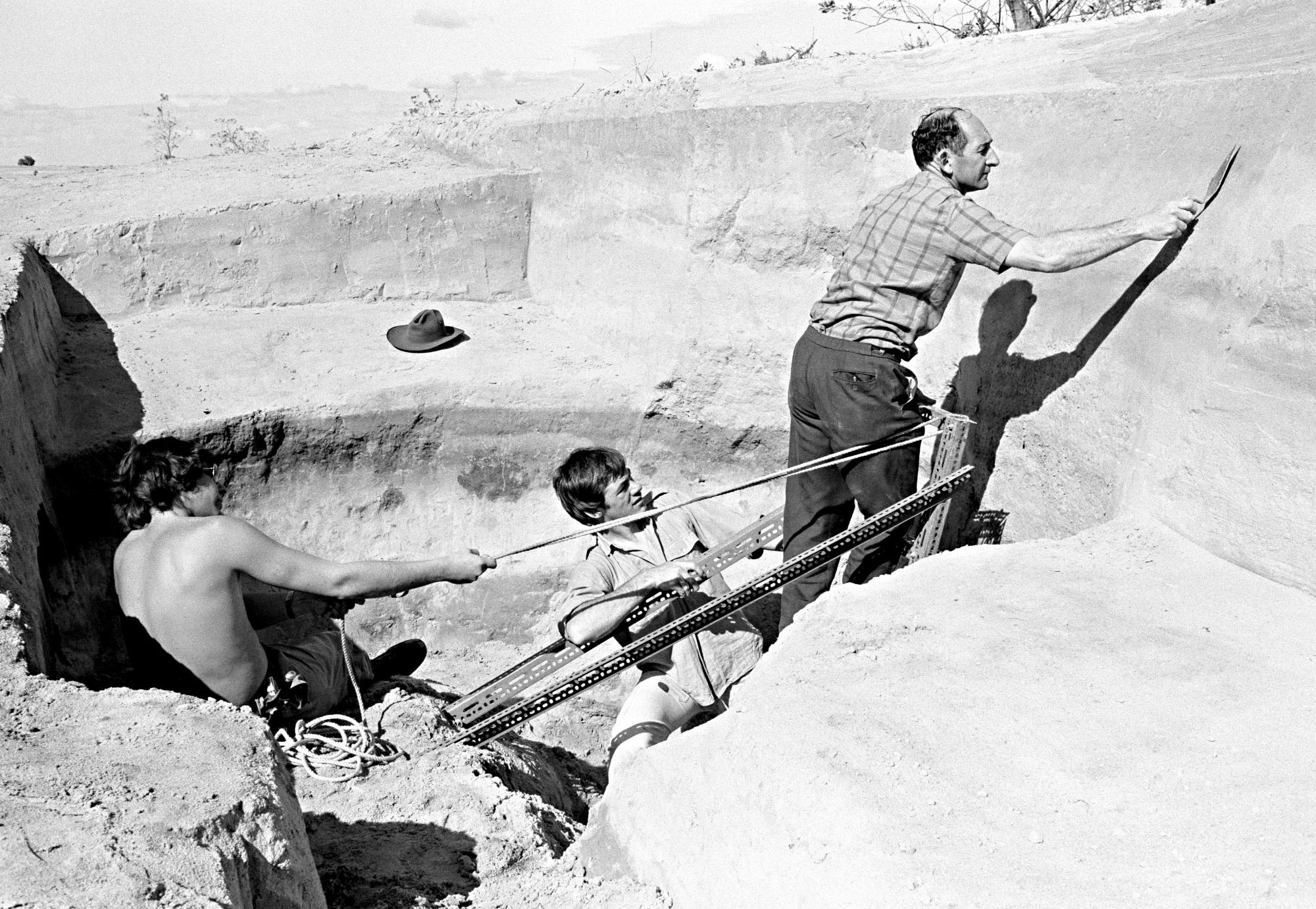
5. Why might the bones of a person be treated in this way?
6. Does it tell you anything about the people who inhabited the area in ancient or Deep Time Australia? Why or why not?
Evidence file 4
Body 2
This body had been buried intact. It was a man who was about 50 years old when he died. He was buried neatly, with a deposit of ochre, often used in ceremonies, spread over his chest. In one arm the bones had been worn down. This would have caused the man great pain from arthritis. This wearing was consistent with what would happen if he was throwing something regularly over a long period of time.
7. Why do you think this body was buried differently?
8. Does this form of burial and the condition of the man’s bones tell you anything about the people who inhabited the area in ancient times? Why or why not? You may need to do some further research to fully answer this question.
Evidence file 5
The scene of the discovery
This is what the area is like today
9. Describe Lake Mungo today.
10. Do you think people would be able to live there permanently in large groups today? Why or why not?
11. What is the purpose of comparing Lake Mungo in modern times to Lake Mungo in ancient or Deep Time? What can we learn from this comparison?
Evidence file 6
Ochre report
This is a piece of ochre. It is soft rock with colouring caused by the minerals in it. It can easily be crushed and made into a powder. Naturally-occurring ochre is not found in the area. The nearest deposit is several hundred kilometres away.
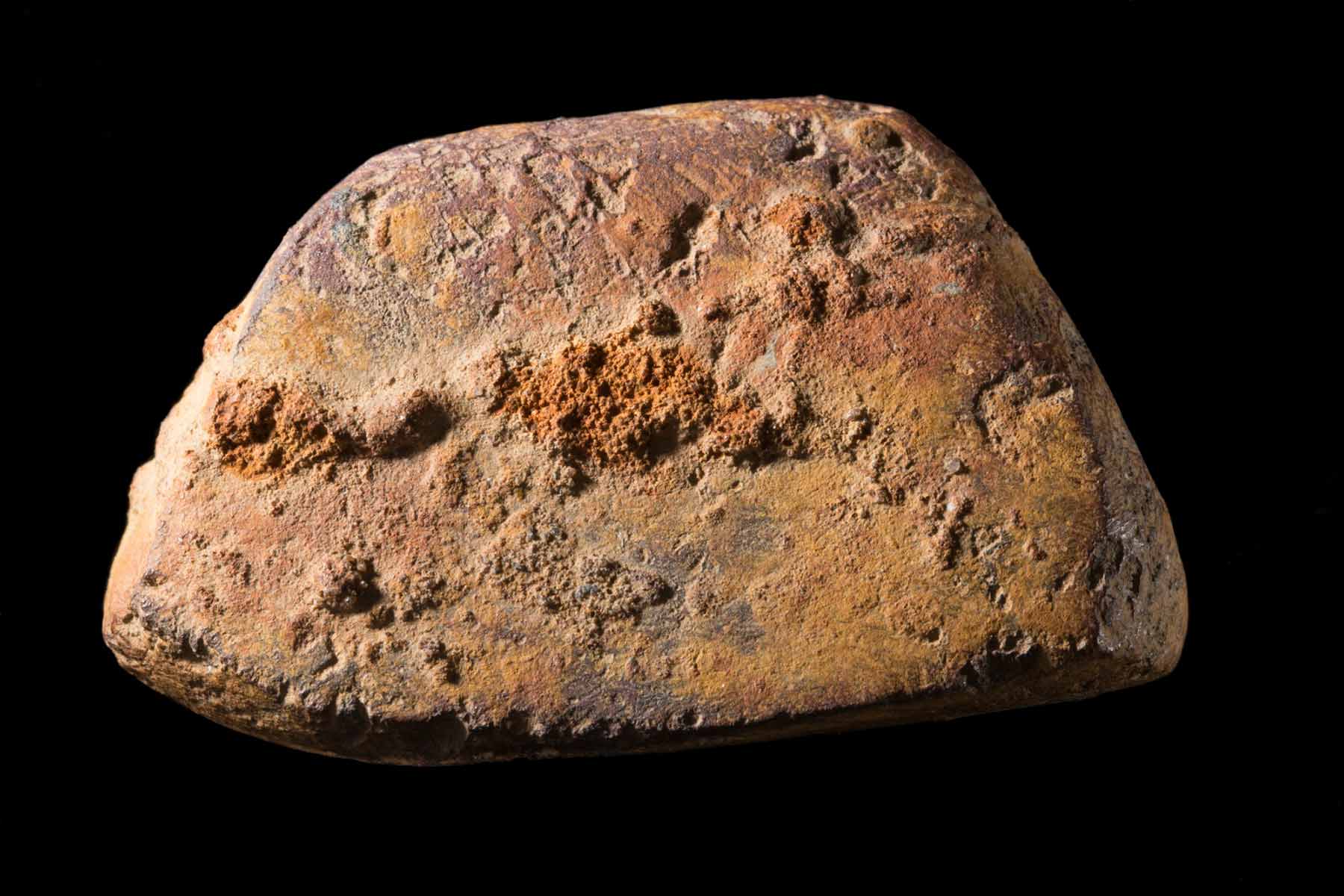
12. What does the discovery of ochre at Lake Mungo tell us about life in ancient or Deep Time Australia?
13. Why might ochre have been spread over the bones?
Evidence file 7
Dating report
The human and animal bones, and all natural materials, have been tested by a radiocarbon dating process. This process analyses the amount of carbon in the remains. By knowing the amount of carbon in that material when it has formed and the rate at which it decays, we can work out how much carbon remains and therefore how old the object is. The scientific dating process gave an age of about 40,000 years for the human and surrounding animal remains.
14. How has the process of carbon dating helped us learn about the human remains and the Lake Mungo area?
Evidence file 8
Stratigraphy
‘Stratigraphy’ means studying layers.
The surface of the earth is constantly changing. Wind and rain cause erosion and the movement of soil. Over time what used to be the surface gets covered over by a new layer of soil or sand. This happens constantly, so layers are always forming, and the oldest layers get pushed further and further down.
There are three major layers of soil in the lunettes at Lake Mungo. The oldest layer is the red Gol Gol soil at the bottom. Next is the grey Mungo layer, which was formed 25–45,000 years ago. The pale brown Zanci layer is on top and was formed 15–20,000 years ago.

By identifying the level at which the human remains were found, we can tell when they were buried and what was happening in that area at that period of time. In this case there was a great deal of animal and plant life at the level at which the bodies were buried. These clues include evidence of food and cooking, fireplaces and stone tools.
15. In which layer were the human remains found?
16. How would stratigraphy help us learn about life at Lake Mungo?
17. How might unregulated digging affect the layers?
Evidence file 9
Climate analysis
Climate studies show that the area where the remains were found has undergone many climate changes that have affected the environment and habitat.
150,000 years ago the Willandra Lakes had formed in low-lying basins and were filled with water from the mountains to the east. Sand blowing off wave-formed beaches on the eastern shores of the lakes began to build lunettes.
A period of wetter climate and abundance arrived about 60,000 years ago. Rainfall in the Great Dividing Range sent the Lachlan River down the Willandra Creek channel to fill the lakes. For the next 20,000 years the lakes were full, the climate was stable and natural resources were plentiful. Archaeological evidence dates the appearance of the first humans in this area at around 40,000 years ago, although from an Aboriginal perspective people have always been in Australia since the land was created. 40,000 years ago the western dunes were vegetated and stable, and the lakes were surrounded by woodlands.
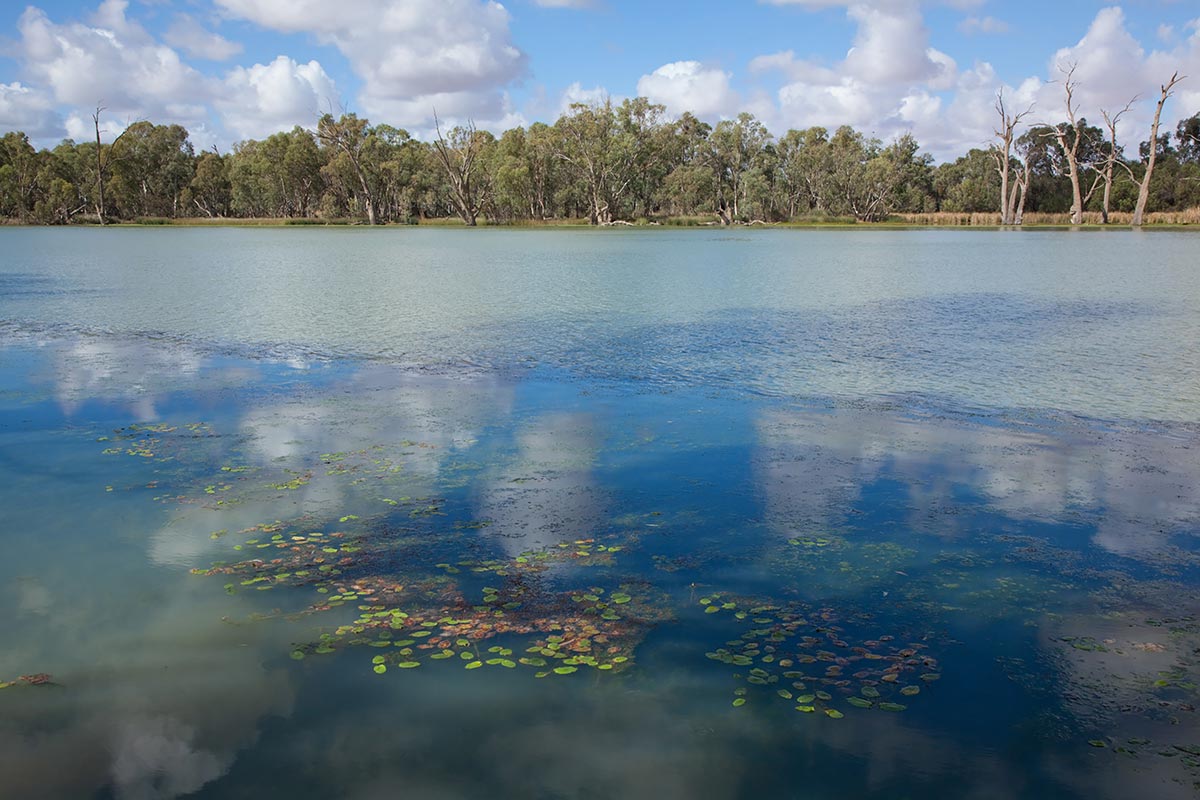
About 22,000 years ago, the climate entered a colder and drier glacial phase. Amid more fluctuations, the lakes began to gradually dry out. By 10,000 years ago the climate had become similar to today and remained relatively stable until the present. Vegetation continued to adapt to the conditions within the semi-arid climate. There was no permanent water, so people could not live there permanently. Europeans colonised in the Willandra area about 160 years ago, bringing sheep, cattle and other introduced animals in large numbers. The vegetation was changed and lunette erosion accelerated.
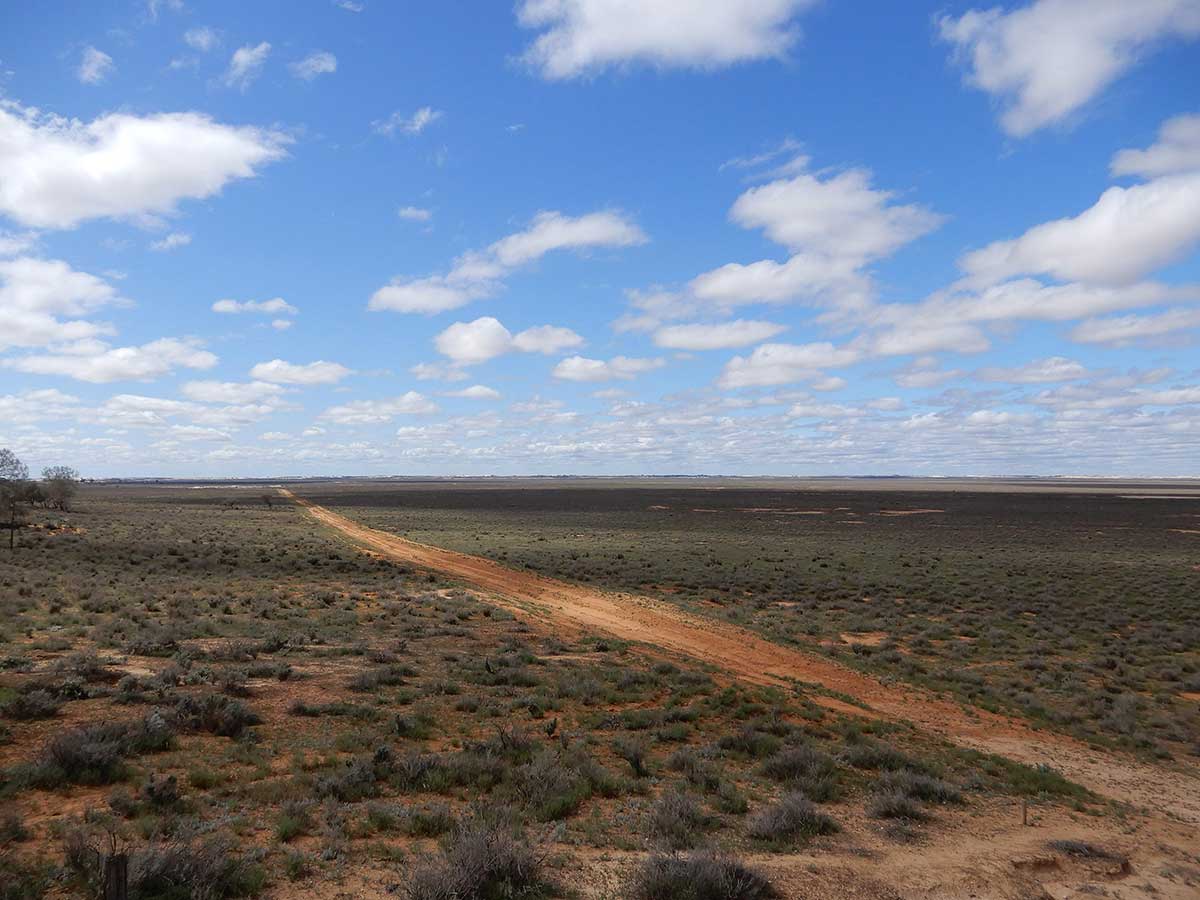
18. According to climate analysis evidence, why did Aboriginal people arrive in this area between 60,000 and 20,000 years ago?
19. Why does change in climate over time affect the ability for humans to live in a particular area?
You can now complete your report.
Cold Case Report
21. What could be the reason for the state of the bones of body 1?
22. Why do you think the bones of body 2 were intact?
24. What could be the reason for the difference in how the bodies had been buried?
25. Do you think the two people buried at Lake Mungo lived there permanently or were nomadic? Explain your answer.
26. Why would Aboriginal Australians have lived around Lake Mungo 40,000 years ago?
27. Why might humans have stopped living around Lake Mungo in modern times?
28. What does the evidence found and analysed at Lake Mungo show us about human occupation of Australia? Include as much detail as you can.






